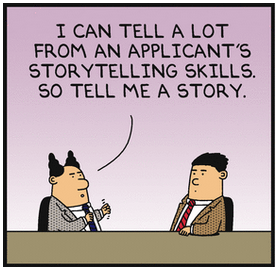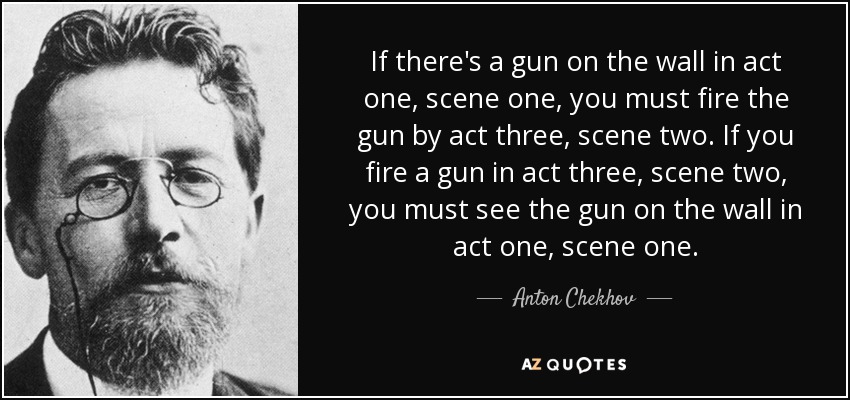There’s a tendency I’ve noticed in theatre writers and theatre-goers alike to want things to be tied up in a neat little bow. But what if things weren’t so tidy? What if the playwright conspired with the director and the actors to leave a few things unresolved. What if we left the theatre with questions, instead of pat little answers?

In continuing to draw from my reading of Theatre of the Unimpressed , Jordan Tannahill traces the origins of this tendency to the “script factory” of Eugene Scribe in 19th century France. If that name alone rings bells in the cobwebby part of your brain, like it did for me, I’ll give you the other key part of the equation: Eugene Scribe is famous for the invention of a little thing called the Well Made Play. Yeah, that Eugene Scribe.
This phenomenon is so prevalent that it has taken on all sorts of other n
ames and variously complicated structures. Blake Snyder’s Save the Cat beats;  that model you learn in school that looks like a big triangle with “rising action” and “denouement” labelling the slopes; not to mention the copious results a google search for “models for story plot development” will deliver. The Well-Made model supports structures as complicated as Inception, or as straightforward as 1979.
that model you learn in school that looks like a big triangle with “rising action” and “denouement” labelling the slopes; not to mention the copious results a google search for “models for story plot development” will deliver. The Well-Made model supports structures as complicated as Inception, or as straightforward as 1979.
I think the last play I saw in Ottawa that was notably working against this model was Kristina Watt’s Particle at undercurrents 2016. A few other pieces have left me asking questions and wondering about things: Madeleine Boyes-Manseau’s 7 Minutes in Heaven at Fresh Meat 2016, for example, seemed more like an experiment in human interaction than an exercise in plotting and character revelation; on the other end of the spectrum of development, Betroffenheit also largely dispenses with traditional means of developing plot, though it does develop along a more-or-less standard plot structure.
The principal difference for me, as a reviewer, is that there is always a clear direction to take when responding to these pieces. They seem to take a lot more risks, and make more clear and interesting decisions as they drive towards the revelation of something other than plot. They make distinct artistic choices, which are the fuel for critical response. The “interesting” factor may be due to the relative infrequency of these sorts of experiments, but in any case, these non-standard pieces provide a different sort of opportunity for their audience.
Interestingly, these plays are often concerned, by necessity, with the fact of their liveness, which well-made plays are free to use or ignore at their peril. When I say “liveness,” I am talking about the fact that we are all sitting together in a dark room with real live humans on stage in front of us. This is distinct from screen-mediated realities, like Netflix. If a play’s liveness is crucial for it to have the meaning that it does, there’s a good chance that it is operating outside the structures of the well-made play. If the liveness of a play is an add-on to its thesis, or central thrust, then there’s a good chance the play is operating largely within the structures of the well made play.
In Well-Made plays, we watch the threads of plot and character unfurl, we criticize the balance struck between character motivation and action, we expect the gun on the mantle in act 1 to be fired in act 3. There are “rules,” or at least guidelines as to what we can expect.
In plays that don’t concern themselves so centrally with plot, the audience is left to figure out for themselves what the conventions of the piece are, and what to pay attention to. They are forced to pay attention to every detail, because, particularly at the piece’s outset, they don’t know which sensory data are significant and which aren’t. This gives the artist/creator an impressive opportunity to transport the audience and influence the understanding they leave with.
Consider that when you are watching a play whose structure you understand on a nearly subconscious level, your conscious mind is free to do more moment-to-moment analysis than if you are constantly challenged to decipher the unique language of the piece unfolding before you. What I mean is that a play that’s telling you a story, in the usual sense of the term, has more work to do to get past the analytical mind and actually affect you emotionally, or change the way you think.
Furthermore, by participating in a creative field with (more) clear “rules” of engagement, you subject yourself to the charge of leaving things “unresolved.” In the most extreme, Why is there a gun on the mantle if it’s not going to be used to shoot someone (or at the very least be used in a feint to fool the audience on some level or other). Guns in this case being a metaphorical stand-in for anything that is introduced that doesn’t come full circle by the end of the story.
Critics, myself included, are famously reliant on their deep understanding of these conventions when writing about all kinds of performance, but particularly pieces that focus on telling a story. Our instincts in this direction are honed by watching so much theatre (and other mediums) that is indeed making the attempt to operate (knowingly or not) within the conventions of a well-made play.
The idea of Chekov’s gun (which, interestingly, coincides in large part with the rise of theatre criticism) stems from the supreme centrality of realism in the era in which Checkov was working. Realism, where a table is in fact a table, and guns principally exist to shoot people, is still extraordinarily prevalent in our artistic mediums today. As such, the move away from well-made narrative structures can also come from a move away from realism. If we expand our conception of what plays and stories are capable of talking about, and the ways they can convey meaning, we can also learn to embrace structures that are less cut and dry. Less resolved.
So, to return to my original question, and one that also relates to the theme of taking risks from last week; what if we made a conscious effort to leave some things unresolved? To allow things a little more room to breathe and stir up questions within us, rather than leave us with all the answers. It’s very difficult to stir up questions when everything is tied up neatly. As critics and audience members, perhaps we would create more space for questions if we were to content ourselves with a little more not-knowing. What happened to that secondary character after they volunteered to do the protagonist a favour? I would love it if we could use our individual imaginations to answer that question, rather than demanding the playwright do it for us before the end of the play, or worse still, write a sequel.
Playwrights and audiences (and critics) alike must work to ask hard questions of one another, to understand one another, to renovate the way that we can and do tell stories. We can’t be lazy in the creation of art, because how we approach art is emblematic of how we approach life. The art that’s made in the space between play and viewer is always a version of human interaction, and we would all do well to remember that human interactions always contain some element of the unknown and unknowable. The art comes from somewhere in the attempt to articulate that unknown thing inside of us.
See you in the dark.

One thought on “The Unresolved”